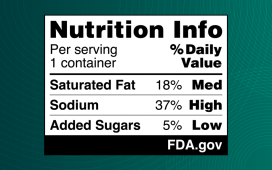Risk for ischemic heart disease elevated even at exposure levels below the current regulatory limit of 10 µg/L
By Elana Gotkine HealthDay Reporter
WEDNESDAY, Oct. 23, 2024 (HealthDay News) — Long-term exposure to inorganic arsenic in drinking water (wAs) from U.S. community water supplies (CWS) at levels below the federal maximum contaminant level of 10 µg/L is associated with an increased risk for cardiovascular disease, including ischemic heart disease, according to a study published online Oct. 23 in Environmental Health Perspectives.
Danielle N. Medgyesi, from the Mailman School of Public Health at Columbia University in New York City, and colleagues examined the relationship between long-term wAs exposure from CWS and cardiovascular disease using statewide health care administrative records from women in the California Teachers Study. Participants’ residential addresses were linked to CWS boundaries and annual wAs concentrations for 1990 to 2020. Exposure was calculated as a 10-year moving average up to participant event, death, or end of follow-up.
The analysis included 98,250 participants, with 6,119 ischemic heart disease cases and 9,936 cardiovascular disease cases. The researchers found that for ischemic heart disease, the hazard ratios (95 percent confidence intervals) at concentration thresholds were 1.06 (1.00 to 1.12), 1.05 (0.94 to 1.17), 1.20 (1.02 to 1.41), and 1.42 (1.10 to 1.84) for 1.00 to 2.99, 3.00 to 4.99, 5.00 to 9.99, and ≥10 µg/L, respectively, compared with <1 µg/L. For every doubling of wAs exposure, the hazard ratios (95 percent confidence intervals) were 1.04 (1.02 to 1.06) and 1.02 (1.01 to 1.04) for ischemic heart disease and cardiovascular disease, respectively. The risk was stronger for those aged 55 years and younger versus those older than 55 years at enrollment.
“This study is one of the first to comprehensively describe risks at exposure levels below the current regulatory limit,” the authors write. “Our results are novel and encourage a renewed discussion of current policy and regulatory standards.”
Copyright © 2024 HealthDay. All rights reserved.








